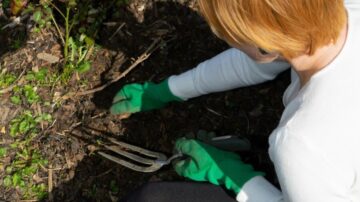Shelly Fan in Singularity Hub:
 Henry Grabar has had enough battling knotweed. All he wanted was to build a small garden in Brooklyn—a bit of peace amid the cacophony of city life. But a plant with beet-red leaves soon took over his nascent garden. The fastest growing plant he’d ever seen, it could sprout up to 10 feet high and grow thick as a cornfield. Even with herbicide, it was nearly impossible to kill. Invasive plant species and weeds don’t just ruin backyard gardens. Weeds decrease crop yields at an average annual cost of $33 billion, and control measures can rack up $6 billion more. Herbicides are a defense, but they have their own baggage. Weeds rapidly build resistance against the chemicals, and the resulting produce can be a hard sell for many consumers.
Henry Grabar has had enough battling knotweed. All he wanted was to build a small garden in Brooklyn—a bit of peace amid the cacophony of city life. But a plant with beet-red leaves soon took over his nascent garden. The fastest growing plant he’d ever seen, it could sprout up to 10 feet high and grow thick as a cornfield. Even with herbicide, it was nearly impossible to kill. Invasive plant species and weeds don’t just ruin backyard gardens. Weeds decrease crop yields at an average annual cost of $33 billion, and control measures can rack up $6 billion more. Herbicides are a defense, but they have their own baggage. Weeds rapidly build resistance against the chemicals, and the resulting produce can be a hard sell for many consumers.
Weeds often seem to have the upper hand. Can we take it away?
Two recent studies say yes. Using a technology called a synthetic gene drive, the teams spliced genetic snippets into a mustard plant popular in lab studies. Previously validated in fruit flies, mosquitoes, and mice, gene drives break the rules of inheritance, allowing “selfish” genes to rapidly spread across entire species.
But making gene drives work in plants has been a headache, in part due to the way they repair their DNA. The new studies found a clever workaround, leading to roughly 99 percent propagation of a synthetic genetic payload to subsequent generations, in contrast to nature’s 50 percent. Computer models suggest the gene drives could spread throughout an entire population of the plant in roughly 10 to 30 generations. Overriding natural evolution, gene drives could add genes that make weeds more vulnerable to herbicides or reduce their pollination and numbers. Beneficial genes can also spread across crops—essentially fast-tracking the practice of cross-breeding for desirable traits.
More here.
Enjoying the content on 3QD? Help keep us going by donating now.
